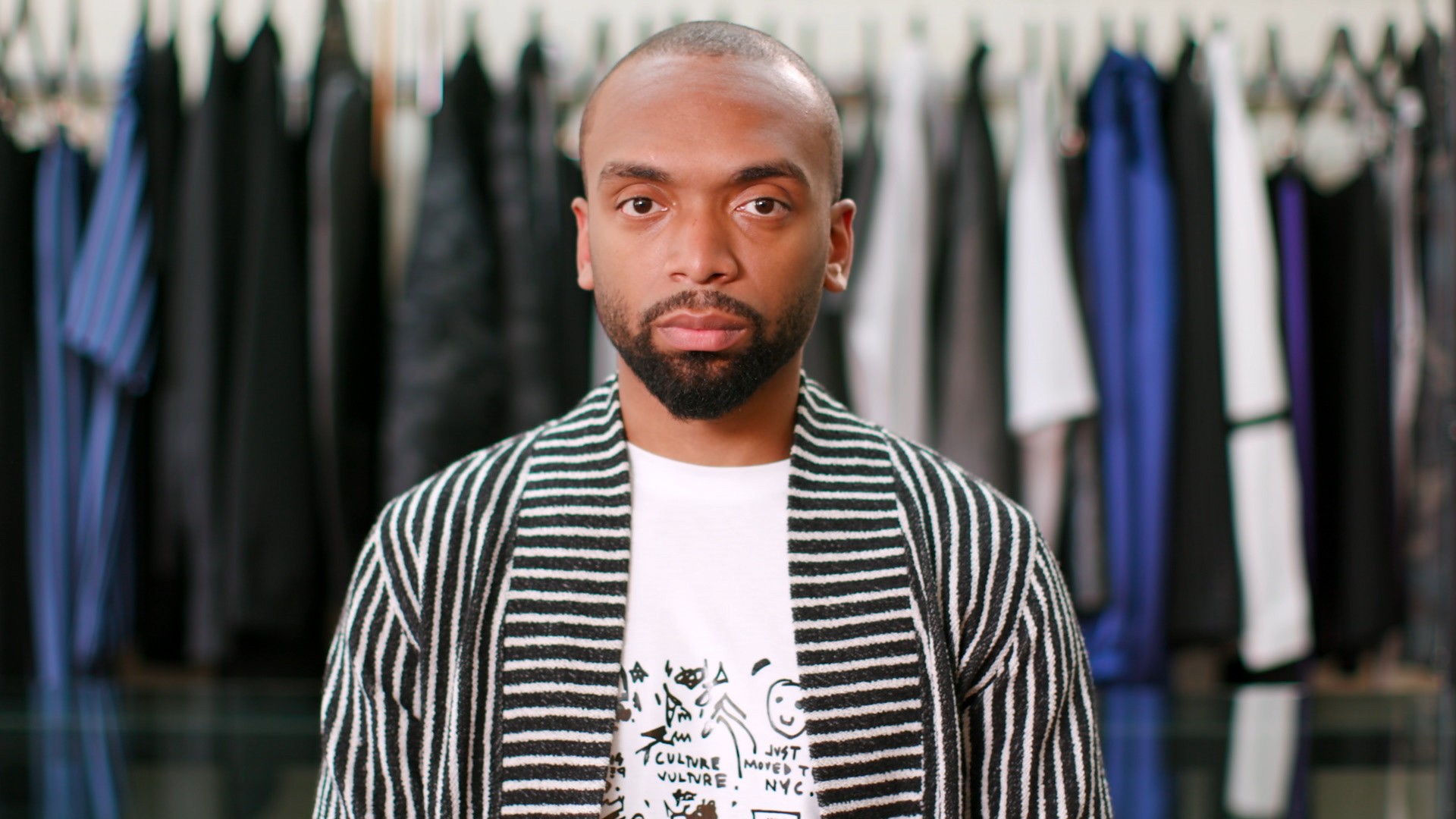Derrick Adams. Photo by Jared Siskin/Patrick McMullan via Getty Images
Derrick Adams's The_Journey
Fashion designer Patrick Kelly in his studio circa 1988 in Paris, France. Photo by PL Gould/IMAGES/Getty Images
WATCH: The fashion designer for Pyer Moss, Kerby Jean Raymond, speak about using his voice to comment on social justice.

But racism met him in New York City, too. "Once the dean of Parsons discovered that 'Patrick Kelly,' wasn't an Irishman, he refused to give him the scholarship he had won," Amelan said to me. I reached out to Parsons about the school revoking a scholarship for Kelly due to his race, but it declined to comment. According to Amelan, Kelly was forced to raise his own money for school tuition. Kelly attended Parsons for one semester, but he ultimately dropped out due to financial reasons.After leaving school, Kelly tried to get jobs in the industry around the city, but Seventh Avenue designers refused to hire him. "They couldn't believe an African American would be applying for a fashion design job," said Amelan. So, to make ends meet, Kelly started hustling—he sold vintage Louis Vuitton luggage, his own fashions, and antique buttons on the streets of New York."New York put him through the hoops of fire, you know," said Andre Leon Talley, who was a friend of Kelly. "New York would of not embraced him! I am sorry to say!"
French fashion designer Patrick Kelly during the after party of the Pret a Porter Autumn Winter 1989 collection. Photo by John van Hasselt/Sygma via Getty Images
Fashion model and entertainer Grace Jones wearing a brightly colored ready-to-wear costume decorated with a cape, sashes, and a tall hat by American fashion designer Patrick Kelly. She is modeling the outfit during his spring-summer 1989 fashion show in Paris. Photo by Pierre Vauthey/Sygma/Sygma via Getty Images
Naomi Campbell at the Patrick Kelly Spring 1989 show circa 1988 in Paris, France. Photo by PL Gould/IMAGES/Getty Images
Fashion designer Patrick Kelly circa 1989 in Paris, France. Photo by PL Gould/IMAGES/Getty Images
A model at the Patrick Kelly Spring 1989 show circa 1988 in Paris, France. Photo by PL Gould/IMAGES/Getty Images
Derrick Adams's Sunday's_Best
Derrick Adams's Mixed Patriotism
Fashion designer Patrick Kelly circa 1989 in Paris, France. Photo by PL Gould/IMAGES/Getty Images
